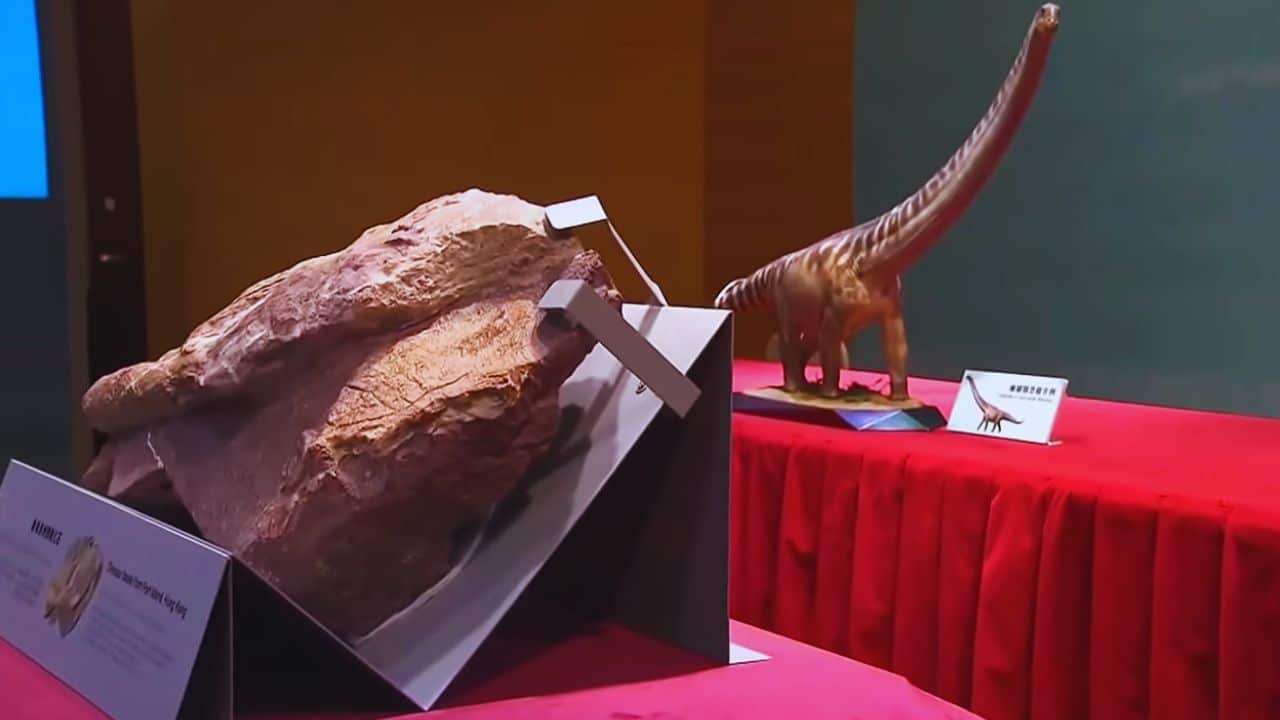In a remarkable breakthrough, Hong Kong has uncovered its first-ever dinosaur fossils on Port Island, located in the northeastern part of the city. Believed to date back at least 66 million years, these fossils mark an important milestone in the city’s paleontological history, providing new insights into the prehistoric life that once existed in the region.
Experts from the Institute of Vertebrate Paleontology and Paleoanthropology of the Chinese Academy of Sciences unearthed the fossils during a field investigation. The discovery, which occurred between June and August, has sparked excitement among scientists and the public alike, as it sheds light on a previously unexplored chapter of Hong Kong’s natural history.
The Fossils: Sauropod or Ornithischian?
While further research is required to confirm the exact species, initial studies suggest that the fossils may belong to one of two types of dinosaurs. They could either be from a Sauropod, a large, long-necked dinosaur that walked on four legs, or an Ornithischian, a herbivorous dinosaur that walked on two legs and had a bird-like pelvic structure. Both types of dinosaurs lived during the Cretaceous period, which spanned from around 145 million to 66 million years ago.
Experts theorize that floodwaters may have washed the dinosaur away, burying it under layers of sand and sediment where it died. This process would have helped preserve the fossils until their discovery millions of years later.
A Public Exhibition and Research Opportunities
The Hong Kong Heritage Discovery Centre will display the fossils, now confirmed to belong to a large adult dinosaur, for public viewing. For those who are eager to learn more about the discovery, a special preview and talk will take place on Thursday before the exhibition opens on Friday. This rare find offers a unique opportunity for Hong Kong residents to connect with their city’s ancient past.
The Development Bureau says this find is significant because it’s Hong Kong’s first dinosaur fossil specimen and opens up new avenues for research on the region’s ancient ecosystems. Secretary for Development Bernadette Linn emphasized the importance of the discovery, stating that it provides “new evidence for research on palaeoecology in Hong Kong.”
Protection of the Site and Further Research
The Hong Kong UNESCO Global Geopark includes Port Island, the location of the fossils. To ensure the protection of the site and to allow for further exploration, the government has temporarily closed the island to the public. Trespassers face penalties of up to $2,000 and three months of imprisonment. Future scientific investigations, expected to yield even more significant findings, will benefit from the closure.
As part of the ongoing efforts to advance paleontological research, Hong Kong’s government and the mainland Chinese institute have signed an agreement to collaborate on future projects. The Port Island fossil discovery will be the first of these joint ventures, with the potential to provide more groundbreaking insights into the region’s ancient past.
A Milestone in Paleontology for Hong Kong
This discovery of dinosaur fossils in Hong Kong marks a historic moment for the city, which has not previously been associated with dinosaur finds. With the fossils now on public display and further research underway, Hong Kong has taken an exciting step toward uncovering the secrets of its prehistoric past. As scientists continue their work, the findings from Port Island may not only reshape our understanding of the region’s history but also inspire future generations of paleontologists.
The Information is Collected from CNN and MSN.





































